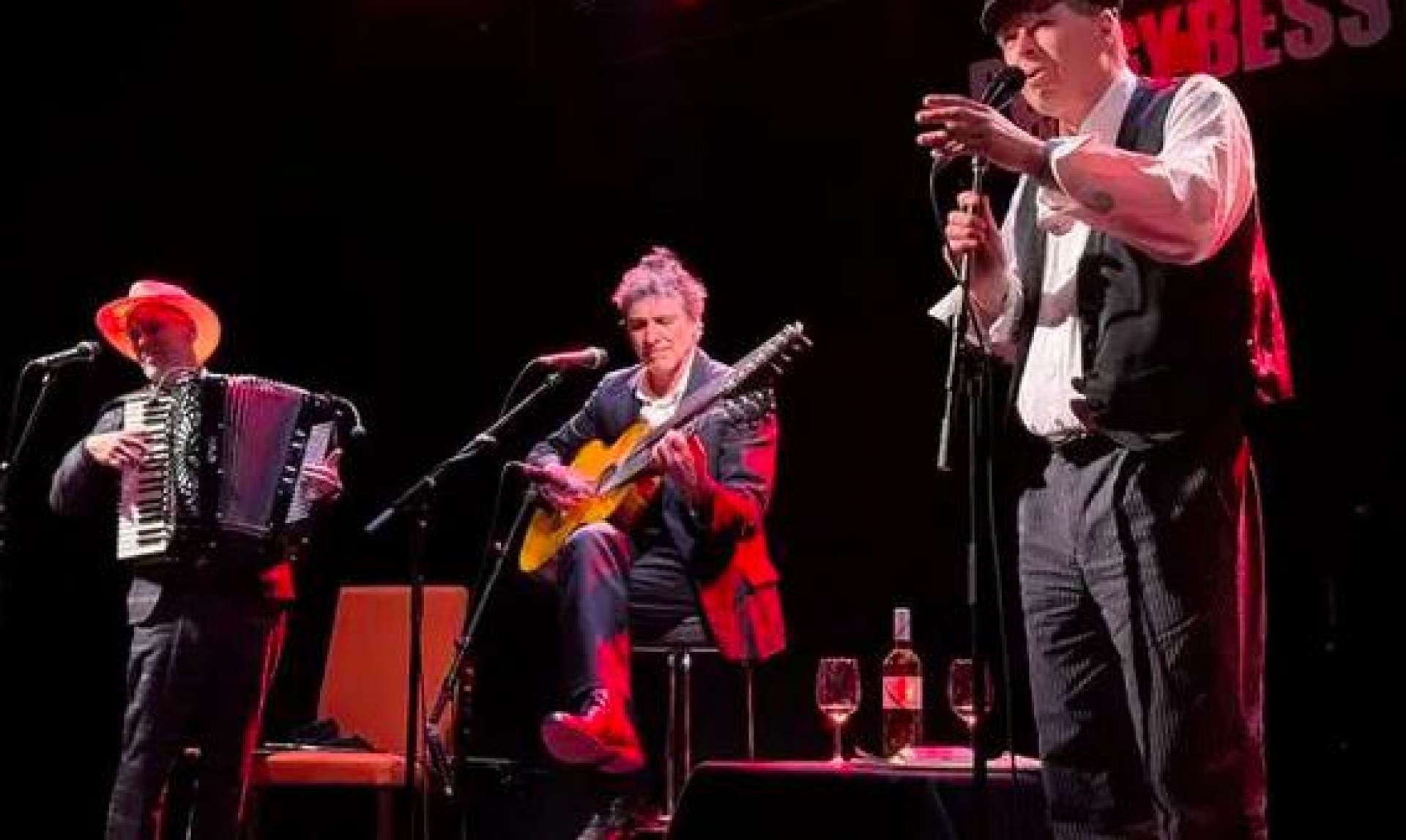Kollegium Kalksburg
Mo | Tu | We | Th | Fr | Sa | Su |
Back at Porgy after ten years: Kollegium Kalksburg
Kollegium Kalksburg invited us on a musical world tour centered on the coal-black Viennese heart.
At the jazz establishment Porgy & Bess, reliable thrills usually tickle the eardrums around New Year’s. Karl Ratzer has been playing violin at New Year's Eve for ages, Raphael Wressnig squeezes a lot of soul from his Hammond organ on New Year’s Day. And yes, the notoriously anarchic Neues Wienerlied combo Kollegium Kalksburg unfolded their Viennese bestiary on Christmas Day for what felt like forever.
Then there was a disagreement, and the tradition died. For ten years. To the relief of longtime fans, this terrible time has now ended. As for Kollegium Kalksburg itself, it is driven by a mysterious mechanism. There is always a bit of unrest within it. The gentlemen argue and reliably irritate each other even in front of an audience. And have done so for 28 years.
Notorious Disagreement
Singer Vincenz Wizlsperger always writes those lovely setlists, which the others just don’t want to follow. And if the others did, Wizlsperger would deviate. This notorious disagreement broke out very early this time. The planned opener “Des kaun wos wean” simply did not happen. The gentlemen started with the apocalypse number “Mir hams mein Schrebergarten g’numman,” once penned by Walter Pissecker and elevated to a classic by Karl Hodina. From the tool shed to the lilac bush, the evil excavator has pretty much flattened everything that touches the Viennese soul. Probably even the food, where bacon and Veltliner Doppler rested. Is it better to listen to this music sober or with a little sentimentality? As a longtime companion of the combo, who perfectly masters the tightrope walk between reflection and abandon, one has tried both but still has no answer.
The Tuba Groaned
The journey deeper into the coal-black Viennese heart continued in the tone of a funeral march. Joe Berger’s “Couplet,” set to music by the legendary Ernst Kölz, was on the program. From Wizlsperger’s tuba, which apparently shrunk during washing, came a terrible groan. Heinz Ditsch, manning the accordion, doubled the effect in his stylish Gigerlanz suit, echoing what Wizlsperger gargled out: “Und olle woartn liebevoll auf des, wos kana hot.”
As world travelers in elegy, Kollegium interpreted everything possible that evening. From a Carlos Gardel tango to Jacques Brel’s chanson “Le Moribond,” from John Lennon’s classic “Working Class Hero” to the son anthem “Chan Chan,” the signature song of the Cuban Buena Vista Social Club. To the latter, Paul Skrepek started a delicate mechanical rhythm machine with a star spray, captivating the audience.
In the end, it was clear that this local soul with its penchant for nagging, fussing, and showing off also exists in international versions. Had they grown up elsewhere, these three unholy figures might have risen to great heights. Here they are doomed to grumble like the Christmas carp of old. A pity, but beautiful.
(Samir H. Köck, Die Presse December 27, 2024)
Program and cast
Wolfgang Vincenz Wizlsperger: voice, comb, euphonium
Heinz Ditsch: voice, accordion, saw
Paul Skrepek: contra guitar, voice
PORGY and BESS Jazzclub
Porgy & Bess (actually, Jazz and Music Club Porgy & Bess ) is a jazz club in the Riemergasse 11 in the 1st district of Vienna. The club , founded in 1993 is considered " the most important jazz organizer and trendy meeting point " of the Austrian capital .
The program of Porgy & Bess speaks to a very large audience , about 70,000 guests a year ; is accordingly Jazz " understood very pluralistic ," and the program " even in fringe areas , such as electronic music , contemporary music and world music penetrated . " Many international artists , particularly from the U.S. space , see also Austrian musician here an opportunity to perform . The club also offers the stage for events, such as the award of the Austrian World Music Award.
Musicologist Christian Scheib According to the Porgy & Bess " at the same time essential for the development of the musical ( jazz ) reality of a City" and needs and uses ' plain commonplace as urban space music. " It creates itself " through artistic preferences, acoustic quality , capacity and real capacity, the necessary exclusion of other clubs. " Here, the different areas of the jazz clubs allow - the area in front of the stage with tables, upstairs gallery , a lateral area with a bar at counter - different intense concentration on the concert scene . For Jazzthetik Porgy & Bess is even a " traditional club . "

 EN
EN DE
DE IT
IT FR
FR ES
ES RU
RU JP
JP RO
RO
 Seating plan
Seating plan 